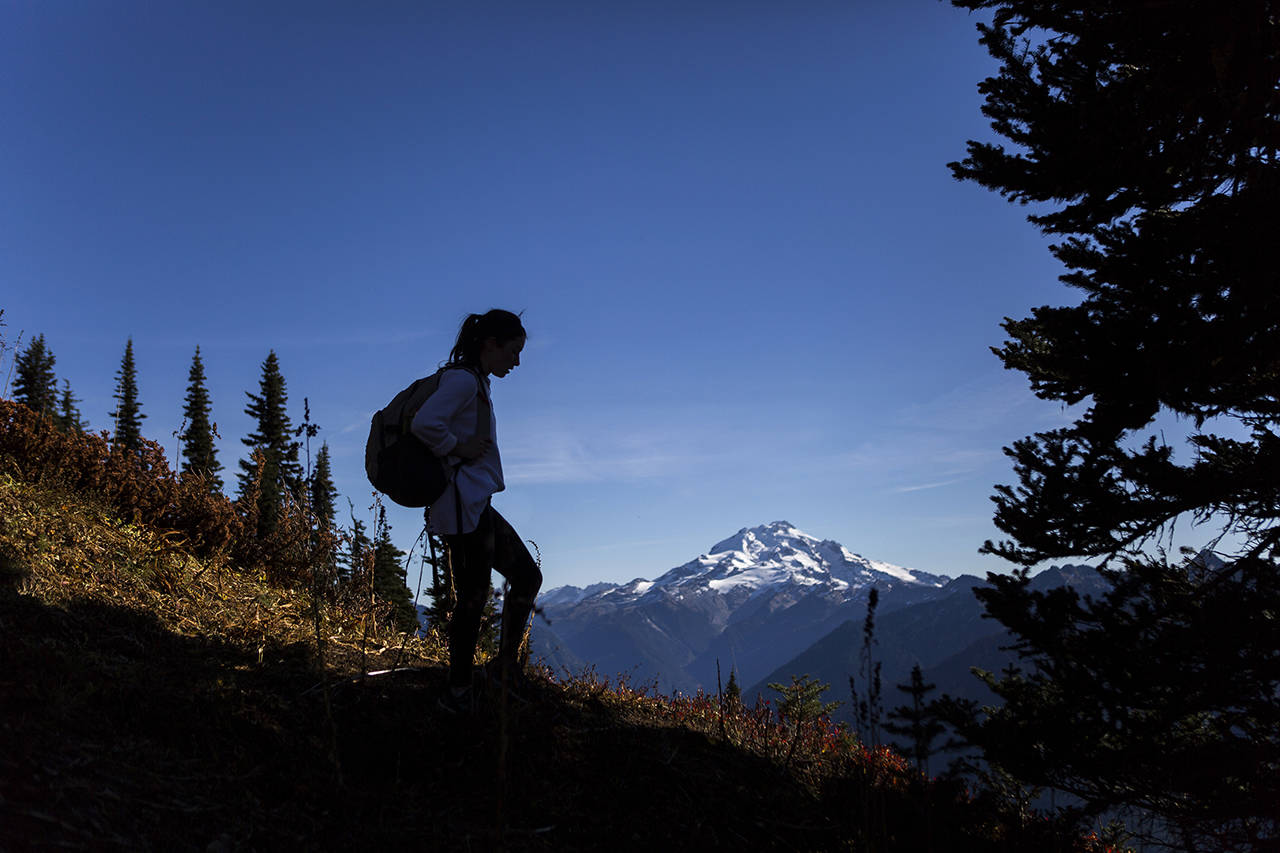GRANITE FALLS — Each year, search and rescue teams dedicate thousands of hours to find people who have gone missing or have been injured in Snohomish County’s wilderness.
Often, they’re found within a matter of hours, alive and well. Sometimes, they need to be carried or helicoptered out.
Then, there are the times when friends and families mourn as rescuers recover a body.
Since 2016, the Snohomish County Sheriff’s Office has carried out more than 1,000 search and rescue missions, dedicating more than 47,000 hours to the efforts. Volunteers contributed the vast majority of that time, said Sgt. John Adams, who heads the search and rescue unit. Those numbers also include people reported missing in cities and suburbs as the result of a mental health issue, such as dementia.
Most missions are resolved quickly, Adams said. In recent memory, only two people have never been found.
A year ago, 27-year-old Samantha Sayers hiked up Vesper Peak off the Mountain Loop Highway, but never came back down. Volunteers spent more than 8,000 hours looking for her, but came up empty handed.
And more than two decades ago, Thomas March, 76, went mushroom picking near Sultan when the weather turned cold and wet. March hadn’t brought his blood thinners and wasn’t prepared for the elements. He was never seen again; the only trace of him were some footprints that matched his shoes.
To prevent the worst from happening, Adams encourages people to take extra precautions before heading off for a hike.
“All these people do these hikes and nothing happens, everything’s fine,” he said, “until that one thing happens.”
An event like a bee sting or a broken ankle can cause someone to lose control of the situation.
A search and rescue mission can take hours, and that can turn dangerous if that person is unprepared to spend the night in the mountains.
Adams said people should do their research: Look at weather forecasts, read recent trip reports on the Washington Trails Association website and review maps of the area.
People should take a moment to assess their physical condition, Adams said, and be truthful about what they can and can’t do. It’s common for younger people to be taking risks, and for older people to be pushing themselves beyond their physical limits, he said.
And whether it’s a day hike or a backpacking trip, people should always take the 10 essentials, he said. That includes first-aid supplies, extra clothing for unexpected weather, food, water, fire, sun protection, a light source, tools for emergency repairs and a shelter.
Inevitably, people will get lost or injured, no matter how prepared they are. In those cases, Adams said, they shouldn’t be afraid to call for help.
“We’ll never be upset if someone calls 911,” he said.
Zachariah Bryan: 425-339-3431; zbryan@heraldnet.com. Twitter: @zachariahtb.
Get lost? S.T.O.P.
If you ever get lost in the wilderness, the Sheriff’s Office suggests remembering a simple acronym: S.T.O.P.
Stop: Don’t panic. Take a moment to breathe, count to 10, drink some water and eat a little food. The fresh perspective will help you better assess your situation.
Think: Where were you when you were last certain of your location? Was it at a trail junction? A river crossing? A place where you can take bearings to obvious physical landmarks that appear on the map? Can you navigate back to that point? If so, carefully return to that spot and reevaluate your options.
Observe: Put your senses on full alert. Picture in your mind all distinctive features you spotted as you came to your current position. Remember the details or any oddities that spurred you to make a mental note. Can you use them as waypoints to guide you back to a place where you were confident of your location? If so, return to that spot. Can you connect with a known trail from that point? Do so. If not, stay put. It’s easier for rescuers to find you near your original line of travel.
Plan: If you are with others, talk over a plan. If not, it can be useful to say the plan out loud as if you were explaining it to someone else. If it makes sense, then follow your plan. If not, revise your plan. If the situation changes as you follow that plan, use “STOP” again to improve your chances for a safe rescue.
Talk to us
> Give us your news tips.
> Send us a letter to the editor.
> More Herald contact information.

























